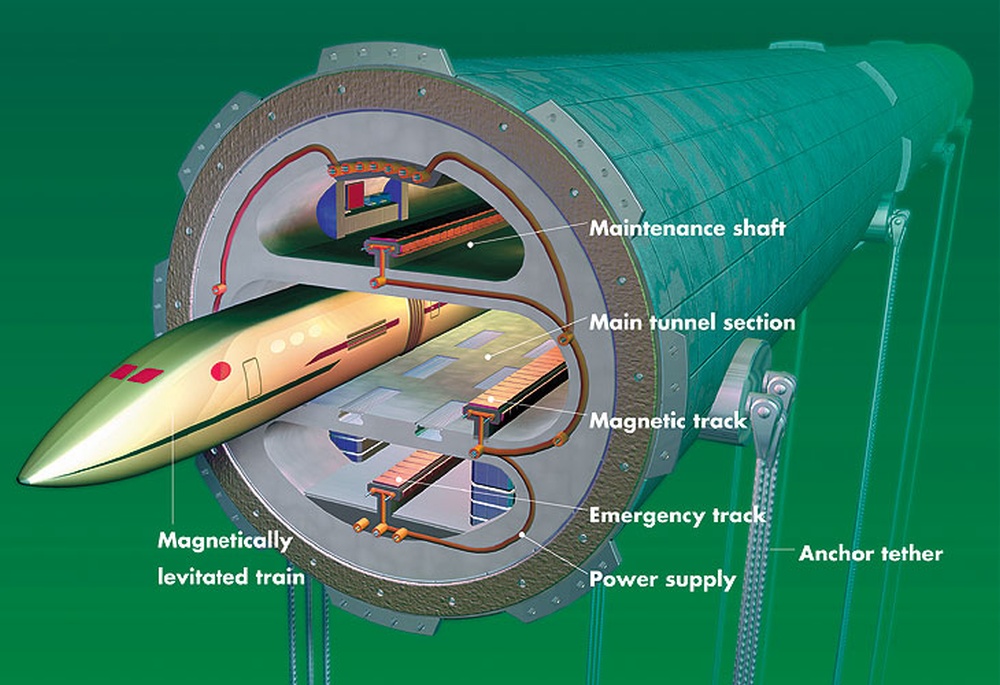Hello ladies and gents this is the Viking telling you that today we are talking about
Transatlantic tunnel
A transatlantic tunnel is a theoretical tunnel that would span the Atlantic Ocean between North America and Europe possibly for such purposes as mass transit. Some proposals envision technologically advanced trains reaching speeds of 500 to 8,000 kilometres per hour (310 to 4,970 mph). Most conceptions of the tunnel envision it between the United States and the United Kingdom ‒ or more specifically between New York City and London.
Advantages compared to air travel could be increased speed, and use of electricity instead of scarce oil based fuel, considering a future time long after peak oil.
The main barriers to constructing such a tunnel are cost first estimated $88–175 billion, now updated to $1 trillion-20 trillion, as well as limits of current materials science. Existing major tunnels, such as the Channel Tunnel, Seikan Tunnel and the Gotthard Base Tunnel, despite using less expensive technology than any yet proposed for the transatlantic tunnel, may struggle financially.
Many variations of the concept exist, including a tube above the seabed, a tunnel beneath the ocean floor, or some combination of the two.
Vactrain
A 1960s proposal has a 3,100 miles (5,000 km)-long near-vacuum tube with vactrains, a theoretical type of maglev train, which could travel at speeds up to 5,000 miles per hour (8,000 km/h). At this speed, the travel-time between New York City and London would be less than one hour. Another modern variation, intended to reduce costs, is a submerged floating tunnel about 160 feet (49 m) below the ocean surface, in order to avoid ships, bad weather, and the high pressure associated with a much deeper tunnel near the sea bed. It would consist of 54,000 prefabricated sections held in place by 100,000 tethering cables. Each section would consist of a layer of foam sandwiched between concentric steel tubes, and the tunnel would also have reduced air pressure.
Jet propulsion
Ideas proposing rocket, jet, scramjet, and air-pressurized tunnels for train transportation have also been put forward. In the proposal described in an Extreme Engineering episode, trains would take 18 minutes to reach top speed, and 18 minutes at the end to come to a halt. During the deceleration phase, the resultant 0.2g acceleration would lead to an unpleasant feeling of tilting downward, and it was proposed that the seats would individually rotate to face backwards at the midpoint of the journey, in order to make the deceleration more pleasant
And as always have a chilled day from the Viking

Comments
Post a Comment